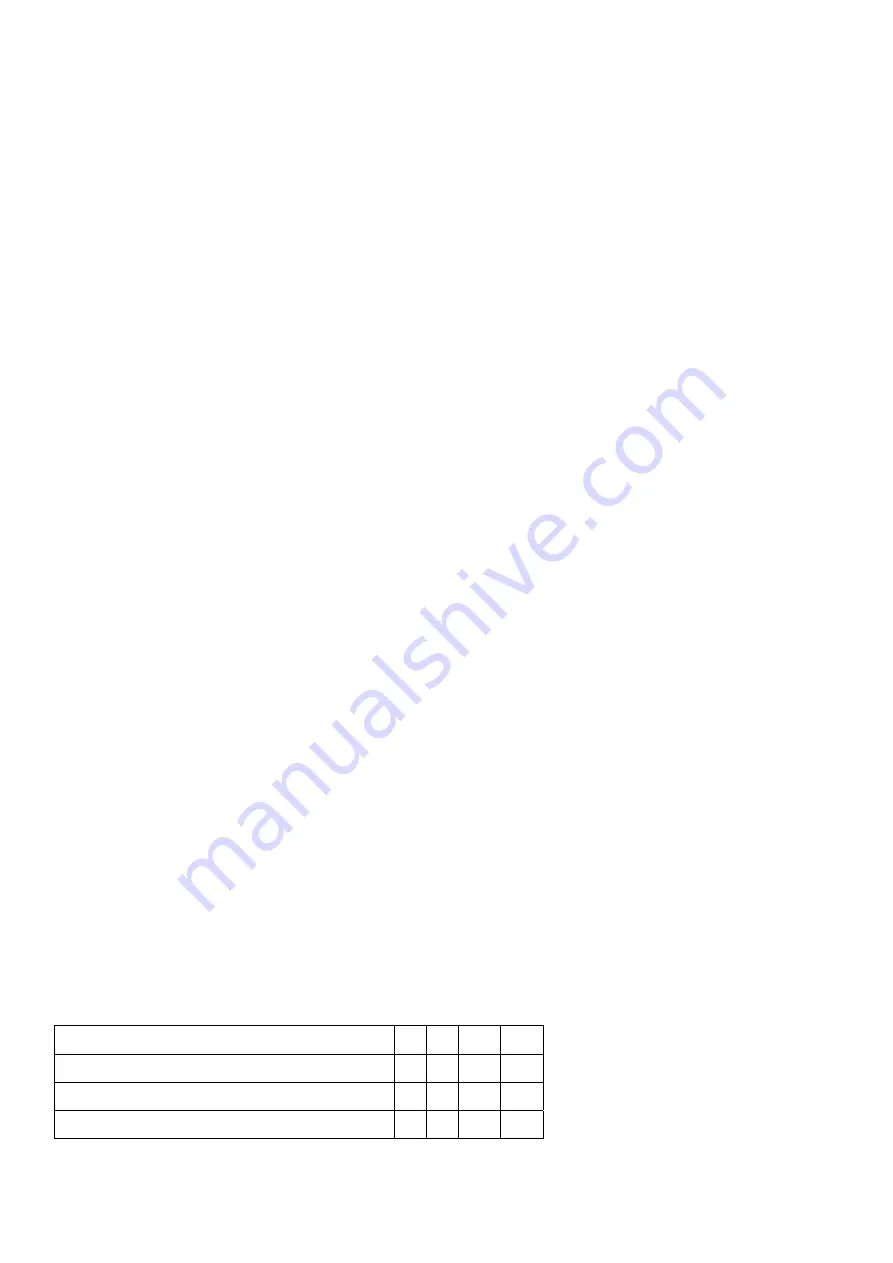
Pg.
7/32
Do
not
use
the
device
to
evacuate
silos
or
confined
spaces
generally.
Do
not
use
if
carbon
monoxide
is
present
(CO).
The
device
leaktightness
depends
on
the
size
and
shape
of
the
user’s
face,
e.g.
beard,
sideburns,
deep
scars,
could
all
affect
the
perfect
leaktightness
between
the
mask
edge
and
the
face.
It
is
a
disposable
filter
that
must
not
be
used
more
than
once.
The
half
‐
mask
allows
wearing
goggles.
The
respiratory
protection
device
must
be
chosen
considering
the
concentration
and
type
of
pollutant
that
protection
is
needed
against.
No
protection
is
given
against
any
type
of
gas
or
vapour.
The
respirator
must
be
changed
when
breathing
resistance
becomes
unbearable.
The
respirator
must
be
used
for
one
work
shift
only.
The
respirator
can
be
used
in
explosive
environments.
4.
USE
4.1.
Before
use
Visually
check
the
half
‐
mask
before
using
it.
If
the
mask
or
filter
looks
damaged,
do
not
use
the
respirator.
Always
check
the
expiry
date
on
the
container
label.
Expired
respirators
must
not
be
used.
4.2.
Use
See
Fig.1
and
Fig.2
Place
the
half
‐
mask
over
your
face,
pass
the
harness
around
your
neck
taking
care
that
the
straps
do
not
get
twisted,
as
shown
in
fig.
1,
then
adjust
them
by
pulling
the
ends,
not
too
tight,
until
the
mask
is
perfectly
tightened
(fig.
2).
A
leaktightness
test
can
be
performed:
cover
the
filter
with
both
hands
and
breath
out
hard.
If
any
air
passes
through
the
facepiece,
position
it
better
and
tighten
the
harness
more.
5.
STORAGE
The
materials
used
have
excellent
anti
‐
age
properties.
However,
it
is
advisable
to
store
new,
packaged
respirators
in
a
well
‐
ventilated
storage
rooms
at
normal
room
temperature.
Do
not
expose
them
to
direct
sunlight
or
temperatures
below
‐
20°C
or
above
+50°C.
Prolonged
exposure
to
extreme
temperatures
could
reduce
the
product
shelf
life.
The
maximum
life
for
an
escape
respirator
is
10
years,
as
shown
on
the
packaging
label.
Dispose
of
the
escape
respirator
after
10
years
(see
the
half
‐
mask
production
date
printed
inside
it).
It
is
advisable
to
keep
new
devices
in
their
original
packaging
during
transport
and
storage,
to
protect
them
from
shocks
and
dust.
Do
not
place
heavy
items
on
top
of
the
device
because
they
could
damage
and
deform
it.
6.
MAINTENANCE
Maintenance
serves
to
reinstate
the
respirator,
so
it
can
be
used
again.
6.1.
Maintenance
intervals
Maintenance
operations
1 2
3
4
Visual
check
X
X
Cleaning
and
disinfecting
X
Changing
the
exhalation
membrane
X
a)
X
b)
1:
Before
use
‐
2:
After
use
–
3:
1
year
–
4:
2
years
a)
half
‐
mask
in
use
b)
half
‐
mask
not
in
use




































